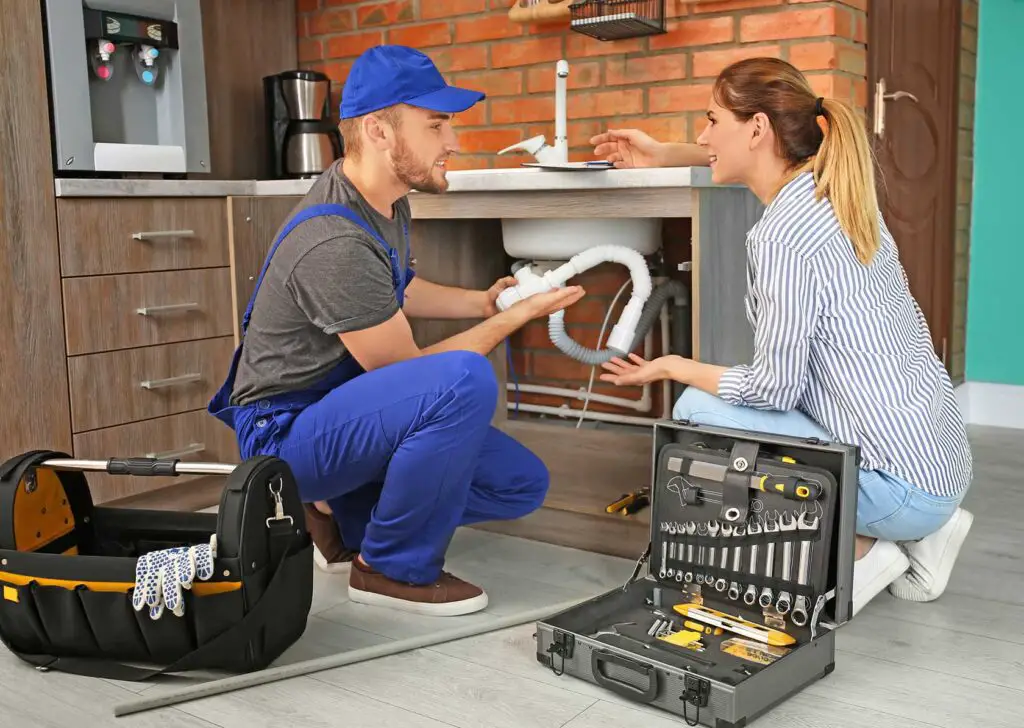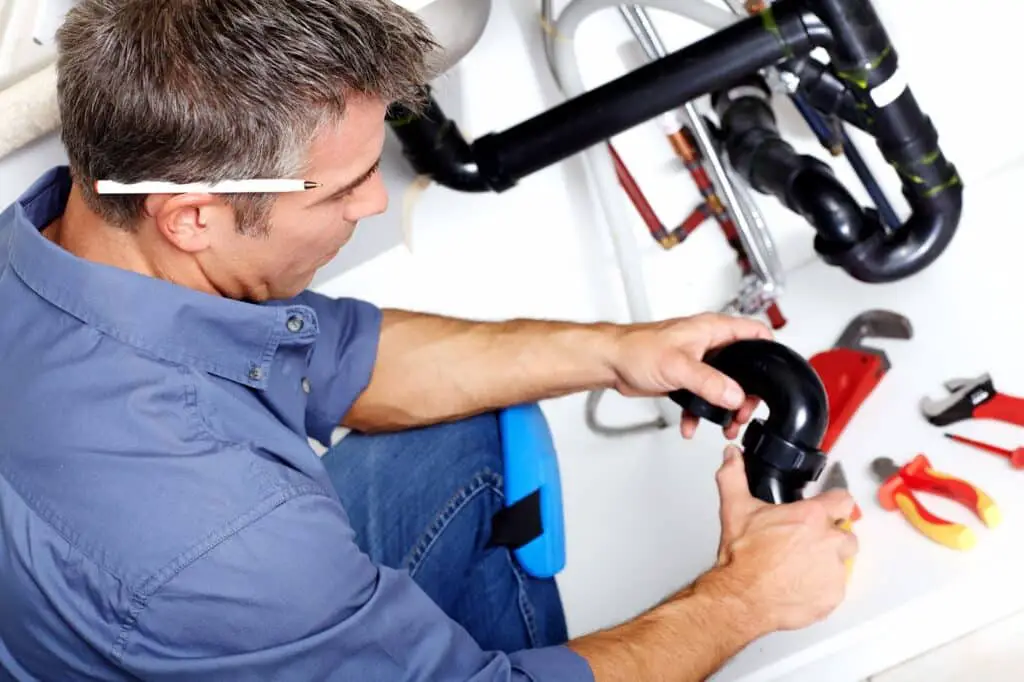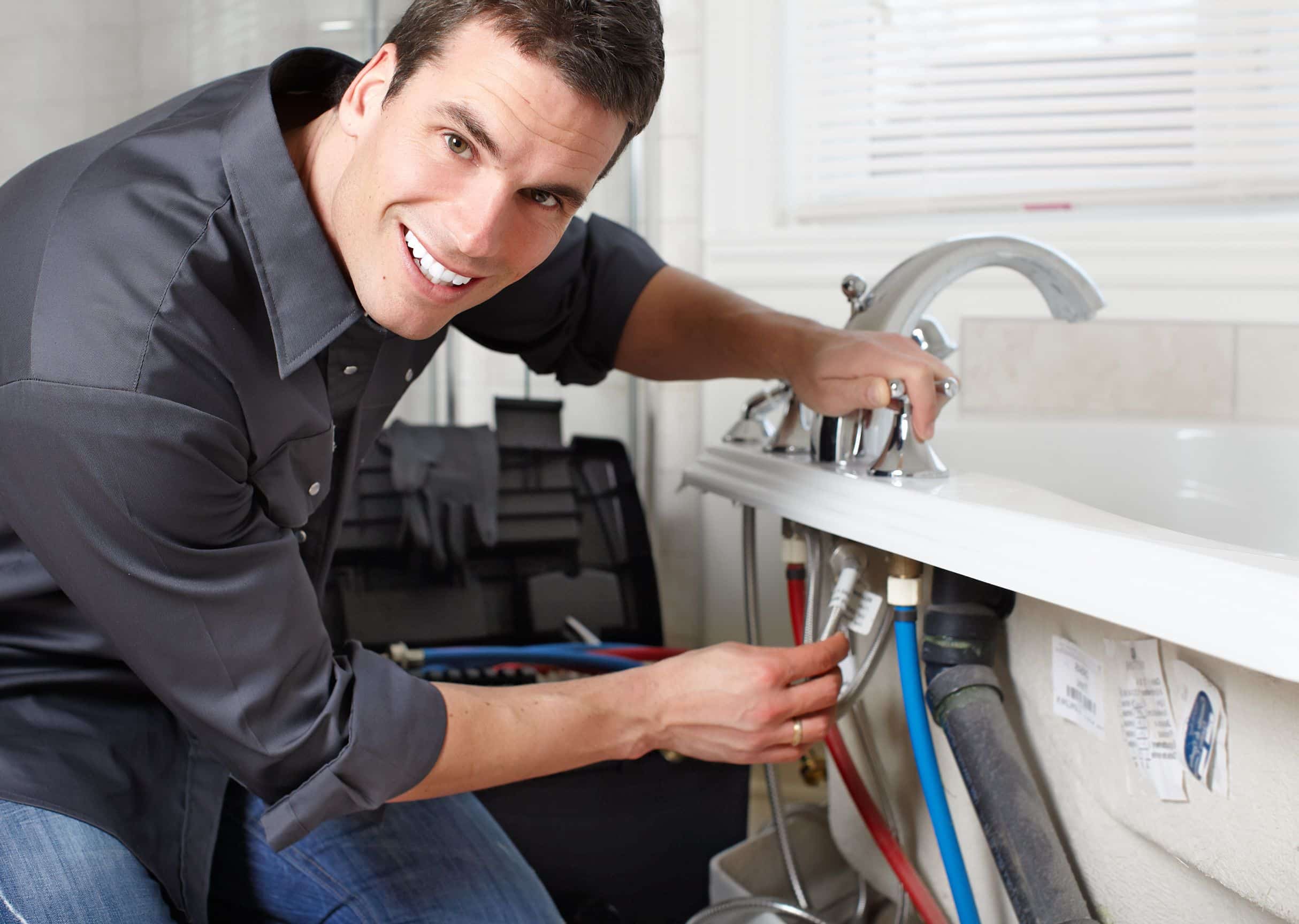What Is Stoppage In Plumbing
Introduction
What Is Stoppage In Plumbing: Stoppage in plumbing is a clog or impediment that prevents water, sewage, or other substances from flowing through pipes, drains, or fixtures. These clogs can occur in sinks, toilets, showers, or main sewage lines. Stoppages can range from tiny obstructions that delay drainage to major blocks that stop water or waste flow.
There are several factors that can contribute to stoppages in plumbing tape. The most common cause is the accumulation of debris, such as hair, grease, food particles, or foreign objects, within the pipes. Over time, these substances can build up and form obstructions that impede the flow of water. In addition, tree roots can infiltrate underground pipes, causing blockages and damaging the plumbing infrastructure.
Stoppage indications must be recognized for quick identification and resolution. Blockages are indicated by slow drainage, gurgling sounds, bad odors, or overflowing fixtures. Ignoring these indicators might cause leaks, broken pipes, and water damage.

What does main line stoppage mean?
Having a main line stoppage means that you’re at risk of ending up with sewage backed up into your home. The main line is the line that runs under your house to the main sewer line in the street. Blockages that develop in this line allow sewage to build up, which can cause it to back up into showers or tubs.
Tree Roots: Tree roots are a significant culprit in main line stoppages. Over time, roots can infiltrate and grow into underground pipes, causing blockages and even pipe damage as they seek water and nutrients.
Collapsed or Damaged Pipes: Main sewer lines may experience deterioration, cracks, or collapses due to age, shifting soil, ground movement, or extreme weather conditions. These damaged pipes can create obstructions or restrict the flow of wastewater.
Multiple Fixture Backups: When more than one plumbing fixture, such as toilets, sinks, showers, or bathtubs, experience simultaneous backups or slow drainage, it indicates a problem in the main line.
Gurgling Sounds: If you hear gurgling or bubbling noises coming from drains, toilets, or other plumbing fixtures, it may be a sign of a blockage in the main line. This occurs as air tries to escape due to the restricted flow of wastewater.
Foul Odors: A persistent foul odor coming from drains or the sewer pipe cleanout can indicate a main line stoppage. The trapped wastewater can emit unpleasant smells as it cannot properly flow away.
How do you fix a plumbing stoppage?
Solutions to Fix plumbing Stoppages
Plunging: Plunging is often the first line of defense when it comes to clearing a clog. For sinks, toilets, or showers, using a plunger can create pressure to dislodge the blockage. Ensure a tight seal around the drain or toilet bowl, and vigorously plunge up and down several times. Repeat as needed until the water starts draining properly.
Chemical Drain Cleaners: Chemical drain cleaners can be effective for minor clogs caused by organic matter or hair. Follow the instructions on the product carefully, as some cleaners may be harmful to certain types of pipes or fixtures. Be cautious and wear protective gloves and eyewear when using chemical drain cleaners.
Plumbing Snake or Auger: Insert the snake into the drain and rotate it to either break up the clog or hook onto it for removal. Snakes are particularly useful for reaching clogs that are deeper in the plumbing system.
Baking Soda and Vinegar: For mild clogs, a natural and chemical-free option is to use a combination of baking soda and vinegar. Pour about a cup of baking soda into the drain, followed by a cup of vinegar. Let the mixture sit for a while to create a bubbling reaction that can help break down the blockage. Finally, flush the drain with hot water to clear the debris.
What happens when a pipe is blocked?
Clogged drains can often cause pipes to back up and overflow. Water will always seek to escape through cracks in caulking, pipe threads, and eventually enter your home. Your tub clog may cause water damage in the room below the bathroom.
Accumulation of Debris: Over time, pipes can become clogged with various substances such as hair, food particles, grease, soap residue, mineral deposits, or foreign objects. These materials can accumulate and constrict the flow of water or waste.
Tree Roots: Underground pipes, particularly sewer lines, can be vulnerable to intrusion by tree roots seeking water and nutrients. As roots penetrate the pipes, they can cause blockages or even lead to pipe damage.
Fat, Oil, and Grease (FOG): Improper disposal of fat, oil, and grease down kitchen drains can contribute to blockages. FOG can solidify and adhere to the pipe walls, narrowing the pipe diameter and impeding the flow of water.
Scale Buildup: In areas with hard water, the accumulation of mineral deposits can lead to scale buildup inside pipes. Scale acts as a magnet for debris and can eventually cause blockages.
Slow or Restricted Drainage: Water or waste may drain slowly or not at all, leading to backups in sinks, showers, toilets, or other plumbing fixtures.
Foul Odors: Blocked pipes can create stagnant water pools, which emit foul odors. Unpleasant smells may emanate from drains or overflow points, affecting the overall indoor air quality.
What is the end of a drain pipe called?
Drain Trap or P-Trap
The drain trap is below the sink, bathtub, or other plumbing fixture. The drain opening leads to the drain trap or P-trap. This pipe is normally a 1-1/4 to 2-inch-diameter segment of pipe with a sharp curved bend in it, shaped like the letter “P.”
Roof drain pipes transport rainwater from a building’s roof. Rainwater is released from a roof drain pipe at the “drain pipe outlet” or “roof drain outlet.” Rainwater flows out from the structure through it, usually near the roof edge or attached to a downspout.
Storm drain pipes collect and convey stormwater from streets, parking lots, and other surfaces. Stormwater is discharged from a storm drain pipe at the “drain pipe outlet” or “storm drain outlet.” Stormwater is directed away from inhabited areas by these outlets along streets or drainage systems.
French Drain Pipes: French drains divert groundwater. French drain pipes release groundwater through the “drain pipe outlet” or “French drain outlet.” This outlet is carefully placed to drain groundwater from saturated areas, reducing flooding.
How do you unblock a pipe line?
In addition to baking soda and vinegar, you can also add water pressure to this mix. To do this, use a 2:1 ratio of vinegar to baking soda, and mix it into 60 gallons of water. As you pour the water down the drain, use a drain snake or plunger to dislodge debris that is blocking water flow.
Plunging:
Plunging is a widely used method for clearing blockages in pipe lines connected to plumbing fixtures. For sinks, toilets, or showers, using a plunger can create pressure and suction to dislodge the blockage. Ensure a tight seal around the drain opening or toilet bowl, and vigorously plunge up and down several times. Repeat as needed until the water starts draining properly.
Chemical Drain Cleaners:
Chemical drain cleaners can be effective for minor clogs caused by organic matter or hair. These cleaners work by breaking down the blockage chemically. However, it’s important to follow the instructions on the product carefully and take necessary safety precautions. Note that certain chemical drain cleaners may not be suitable for all types of pipes or fixtures.
Plumbing Snake or Auger:
A plumbing snake, also known as an auger, is a flexible cable with a specialized head that can be inserted into a pipe line to break up or retrieve blockages. It is particularly useful for reaching deeper clogs or removing solid objects obstructing the pipe. Insert the snake into the pipe line and rotate it to either break up the blockage or hook onto it for removal.
Hydro Jetting:
Hydro jetting is a powerful method that uses high-pressure water to clear blockages and clean the inside of pipe lines. It is especially effective for stubborn clogs, grease buildup, or mineral deposits. Professional plumbers typically utilize hydro jetting equipment, which can deliver a concentrated stream of water to flush out the blockage and restore proper flow.
How do you check for blockage in pipes?
You can drain the pipe, fill the partially blocked pipe with hot water and use your forearm to feel the pipe. Alternatively, instead of using your forearm, you can opt for other tools like an infrared camera or a temperature gun if you’re in a position to get one.
Visual Inspection: Perform a visual inspection of the affected area to look for signs of blockage. Check for slow drainage, standing water, or unusual odors near drains, toilets, or sewer cleanouts. Additionally, inspect exposed pipes for any visible debris or buildup.
Listen for Gurgling Sounds: Listen for gurgling or bubbling sounds coming from drains or toilets. These sounds can indicate air trapped in the pipes due to a blockage, causing water to drain slowly.
Conduct a Water Flow Test: Turn on the faucets and observe the water flow in sinks, showers, and tubs. If the water drains slowly or backs up, it suggests a potential blockage downstream.
Check Multiple Fixtures: Flush toilets and run water in multiple fixtures simultaneously to observe if any backups or drainage issues occur. If multiple fixtures experience problems simultaneously, it could indicate a blockage in the main sewer line.
Use a Plunger: For minor clogs in sinks, toilets, or showers, use a plunger to apply pressure and check if the blockage can be dislodged. If the water drains properly after plunging, it indicates a temporary or partial blockage.
Do plumbers unblock pipes?
A qualified plumber will access the deepest crevices where more sludge and gunk may be hiding. During a professional sink blockage cleaning, your plumber will likely disassemble the pipes. Putting the pipes back together can be tricky if you’re unsure what you’re doing, so it’s always best to consult a professional.
Specialized Tools and Equipment:
Plumbers have access to specialized tools and equipment designed specifically for unblocking pipes. These tools include drain snakes, also known as augers, which are flexible cables used to break up or retrieve blockages. Additionally, plumbers may utilize hydro-jetting machines that use high-pressure water to clear blockages, or sewer cameras to visually inspect the pipes and identify the cause and location of the blockage.
Tailored Solutions:
Not all pipe blockages are the same, and plumbers understand this. They assess each situation individually and employ the most suitable method to unblock the pipes based on the severity and location of the blockage. Plumbers can tailor their solutions to the specific plumbing system, whether it’s a residential home, commercial property, or industrial facility.
Prevention and Maintenance:
Plumbers not only unblock pipes but also provide preventive maintenance services. They can offer advice on best practices for preventing future blockages, such as proper waste disposal, regular drain cleaning, and the installation of drain traps or filters. By addressing the underlying causes and providing preventive measures, plumbers help homeowners and property owners avoid recurring blockages in the future.
Safety and Compliance:
Plumbing work can involve potential hazards, such as exposure to harmful substances or working in confined spaces. Plumbers are trained to prioritize safety and adhere to industry standards and regulations. They are equipped with the necessary protective gear and are familiar with safety protocols, ensuring that the unblocking process is carried out safely for both themselves and the property.
What is stoppage in plumbing?
Obstruction is a popular synonym for’stoppage’. Plumbers usually refer to obstructions as sewage or drain line blockages. Nick’s Plumbing & Air Conditioning clients often use ‘headache’ to describe obstruction.
There are many plumbing system blockage causes. Time-accumulated garbage and waste is the main culprit. Hair, soap scum, food particles, grease, and other debris can clog pipes and drains, blocking water flow. Tree roots can also damage subsurface pipelines and block them.
Stoppage indications must be recognized for quick identification and resolution. Blockages are indicated by slow drainage, gurgling sounds, bad odors, or overflowing fixtures. Ignoring these indicators might cause leaks, broken pipes, and water damage. Avoiding foreign particles, fats, oils, and solid debris in the plumbing system can also decrease blockages.
Plumbing systems
Multiple methods and tools are used to fix a halt. Simple plungers or chemical drain cleaners can clear minor obstructions. Chemical drain cleaners break down dirt, while plunging pressures it loose. Professional plumbers should be called for more obstinate or substantial blockages. Plumbers use drain snakes, hydro-jetting machines, and sewer cameras to find and clear blockages.
Plumbing system stoppages can be avoided by prevention. Debris can be prevented by frequent inspections, drain cleaning, and trash disposal. Avoiding foreign particles, fats, oils, and solid debris in the plumbing system can also decrease blockages.

Conclusion
Stoppage in plumbing refers to the blockage or obstruction that disrupts the normal flow of water, sewage, or other substances through pipes, drains, or fixtures. It is a common problem that can occur at various points in the plumbing system, leading to slow drainage, foul odors, or even complete blockages. Recognizing the signs of a stoppage is essential for timely resolution and to prevent more severe plumbing systems.
Depending on the degree and location of the blockage, plungers, drain snakes, hydro-jetting devices, or sewer cameras are used to remove it. Inspections, drain cleaning, and garbage disposal help prevent stoppages.
We can prevent plumbing stoppages by understanding the causes and adopting precautions. Our plumbing infrastructure will last longer if we act quickly and seek professional aid. A proactive approach to stoppages promotes a seamless plumbing system, delivering convenience, hygiene, and peace of mind.








